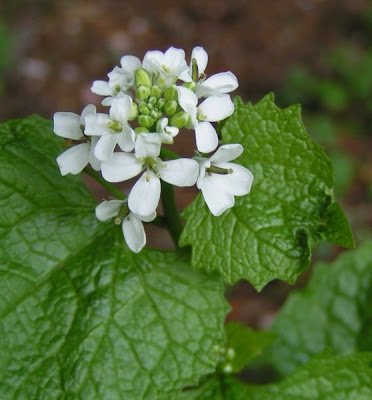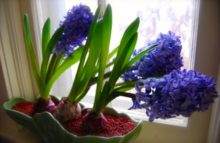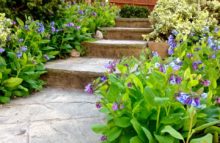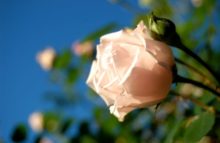Picture shows kidney shape leaf form of first year growth of biennial garlic mustard. Garlic mustard does not provide a food source for this hungry Cotton-tailed rabbit.
With thanks to a Toronto Gardens reader, who recently mentioned troublesome g
arlic mustard in our comment area, here are our Top Ten reasons to search and detroy this invasive and increasingly troublesome non-native plant. If you see it in your garden, get rid of it! If you want to grow it for herbal use, keep it in a container, away from cultivated areas, and keep your eye on it.
1. Garlic mustard is the “purple loosestrife” of woodlands and fencerows. It’s an alien and invasive specie
s brought to North America from Europe by the pioneers, for use in cooking and medicine.
2. Natural fungi and other organisms that control the plant in Europe and Asia are not present in North America, adding to its invasiveness.
3. It is one of the most rapidly expanding invasive plants of woodland habitats in eastern Canada.
4. It forms a dense monoculture affecting indigenous wildflower populations.
5. It competes with native spring-flowering wildflowers by stealing light, moisture, nutrients, soil and space. Plants adversely affect
ed: spring beauty,wild ginger, bloodroot, Dutchman’s breeches, hepatica, toothworts, and trilliums.
6. Its rampant growth is actually endangering certain wildflowers: the wood poppy, (threatened) and the wood aster (threatened).
7. It endangers wildlife and insects that depend on native early spring-flowering plants. Wildlife are not able to use garlic mustard plant for food.
8. It’s a voracious seed-spreader, each plant producing between 150 and 850 seeds per plant.
9. Seeds can remain viable in the soil for up to 5 years.
10. It is toxic to butterflies, which perform important functions in the ecosystem, like plant pollin
ation. Butterflies lay their eggs on the plant, mistaking it for a native Toothwort, and either eggs do not hatch because of toxicity from the leaves, or larvae are not able to feed on the leaves. The Huron Fringe Forest, the forested area that runs parallel to the Lake Huron, shows signs of invasion by garlic mustard.
In Ontario, garlic mustard infestations can be quite dense and advance quickly. It’s unfortunately shade tolerant, so is found in rich, moist forests and wooded streambanks, plus more and more in our own gardens. It often arrives after a shipment of manure has been applied to the garden.
To eliminate this weed/pest in your garden or property
1. Do not compost this plant if it has gone to seed. Seeds can remain dormant in the compost and re-germinate in your garden.
2. Light infestations can be controlled by hand pulling. Plants should be pulled before seeds have ripened. Care must be taken that the entire root is removed and disturbance to the soil is minimal.
3. Plants are biennial. Remove in the first year, before they mature and set seed. Pull up first-year kidney shaped rosettes, (see pic above) including root. If you are dealing with mature plants with flowers, and/or seeds, cut entire plant carefully off at bottom, and bag it. Try not to dislodge seeds when you are doing this. Burn or dispose. City compost collection is safer than your own household compost.
 In year two, garlic mustard has pointed leaves and white flowers.
In year two, garlic mustard has pointed leaves and white flowers.
4. Start weeding early. One blessing is that the plant sprouts very early in the spring. This helps you to identify it, (one of the first green things you’ll see) and allows you to get it out of the garden before it really takes hold. Small, young roots are easier to yank out than more mature ones later in the season.
Something fun from the Cold Climate Gardening blog, here’s one woman’s new Mother’s Day tradition, pulling and bagging garlic mustard. Read it here.
**********************
Garlic Mustard facts: Scientific name: Alliaria petiolata
Common names: Garlic mustard, hedge garlic, sauce-alone, jack-by-the-hedge, poor man’s mustard, jack-in-the-bush, garlic root, garlicwort, mustard root





1 comment
But after reading your post, I don’t think I should be waiting for Mother’s Day. I thought it was perennial, not biennial. I (We) should be pulling it now.